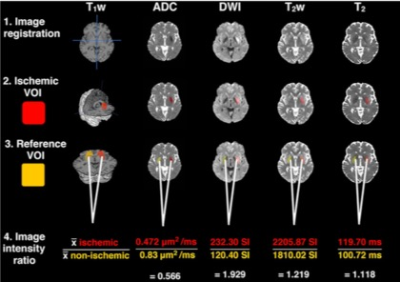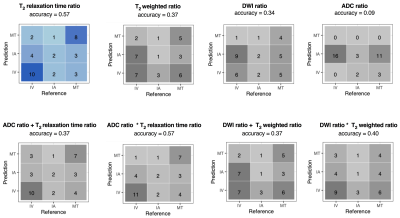Bryony L. McGarry1,2, Elizabeth Hunter1, Robin A. Damion2, Michael J. Knight2, Philip L. Clatworthy3, George Harston4, Keith W. Muir5, Risto A. Kauppinen6, and John D. Kelleher1
1PRECISE4Q Predictive Modelling in Stroke, Information Communications and Entertainment Institute, Technological University Dublin, Dublin, Ireland, 2School of Psychological Science, University of Bristol, Bristol, United Kingdom, 3Stroke Neurology, North Bristol NHS Trust, Bristol, United Kingdom, 4Acute Stroke Programme, Radcliffe Department of Medicine, University of Oxford, Oxford, United Kingdom, 5Institue of Neuroscience and Psychology, University of Glasgow, Glasgow, United Kingdom, 6Faculty of Engineering, University of Bristol, Bristol, United Kingdom
1PRECISE4Q Predictive Modelling in Stroke, Information Communications and Entertainment Institute, Technological University Dublin, Dublin, Ireland, 2School of Psychological Science, University of Bristol, Bristol, United Kingdom, 3Stroke Neurology, North Bristol NHS Trust, Bristol, United Kingdom, 4Acute Stroke Programme, Radcliffe Department of Medicine, University of Oxford, Oxford, United Kingdom, 5Institue of Neuroscience and Psychology, University of Glasgow, Glasgow, United Kingdom, 6Faculty of Engineering, University of Bristol, Bristol, United Kingdom
Using ordinal logistic regression, T2 relaxation times can be used to calculate the probabilities of an acute ischaemic stroke patient with unknown onset time being within treatment time-windows for intravenous thrombolysis, intra-arterial thrombolysis and mechanical thrombectomy.

1. All images were resampled to 1mm isotropic resolution and co-registered to the MNI registered T1W image. 2. Ischaemic VOIs were created using previously described ADC and T2 limits to reduce CSF contribution.2,10 3. Non-ischaemic VOIs were created by reflecting the ischaemic VOI across the vertical axis and applying the ADC and T2 limits. 4. Image intensity ratios were computed by dividing the mean values of ischaemic VOIs by mean non-ischaemic VOIs. SI = signal intensity.

Accuracy and confusion matrices for cumulative ordinal regression models. Darker shades indicate the higher number of correct predictions. The standardised T2 relaxation time ratio was the most accurate at identifying patients within each treatment window. All models identified patients within the middle IA treatment window. In this figure, a + indicates a linear combination of input features, and * indicates the inclusion of an interaction term.
